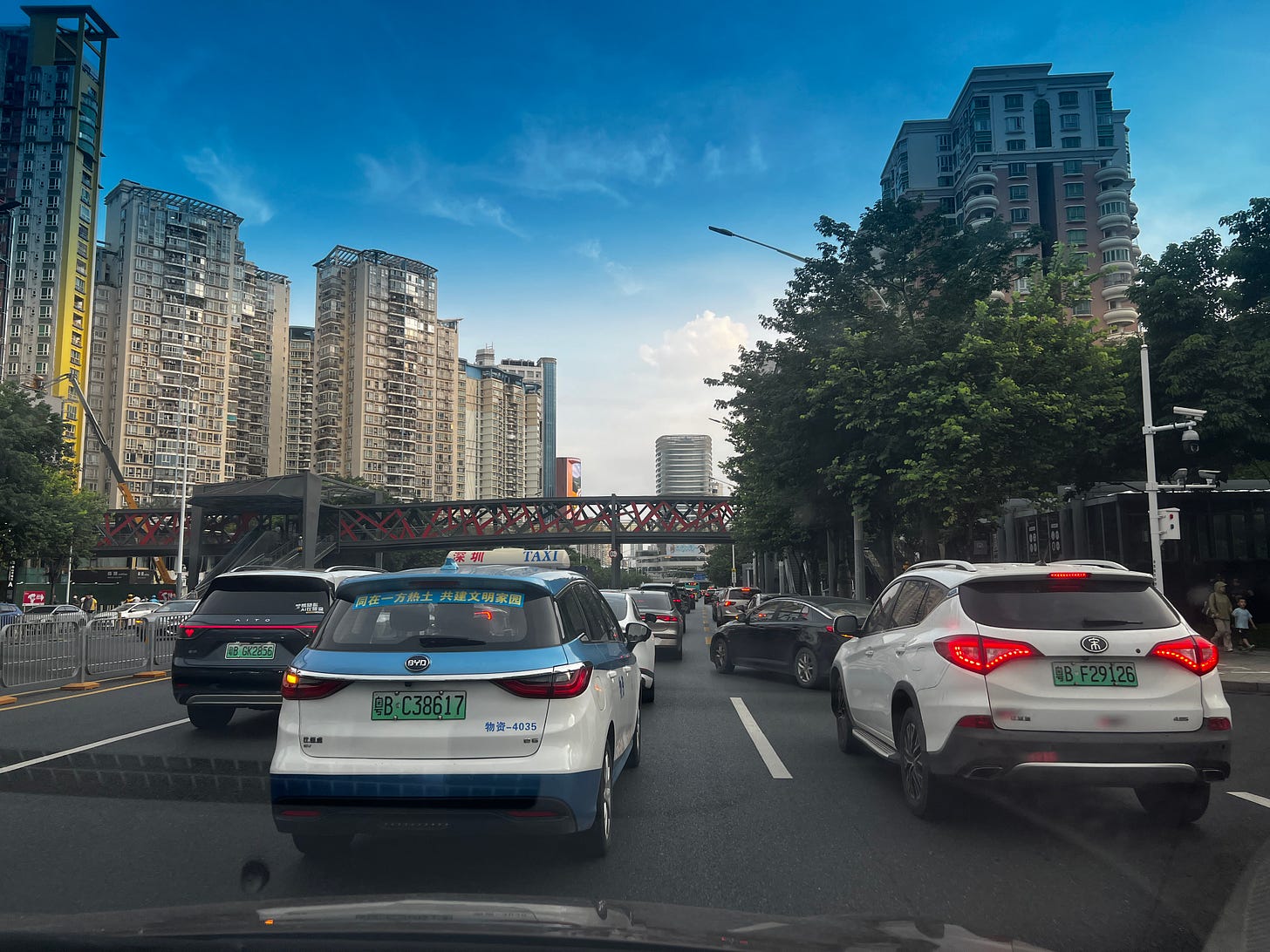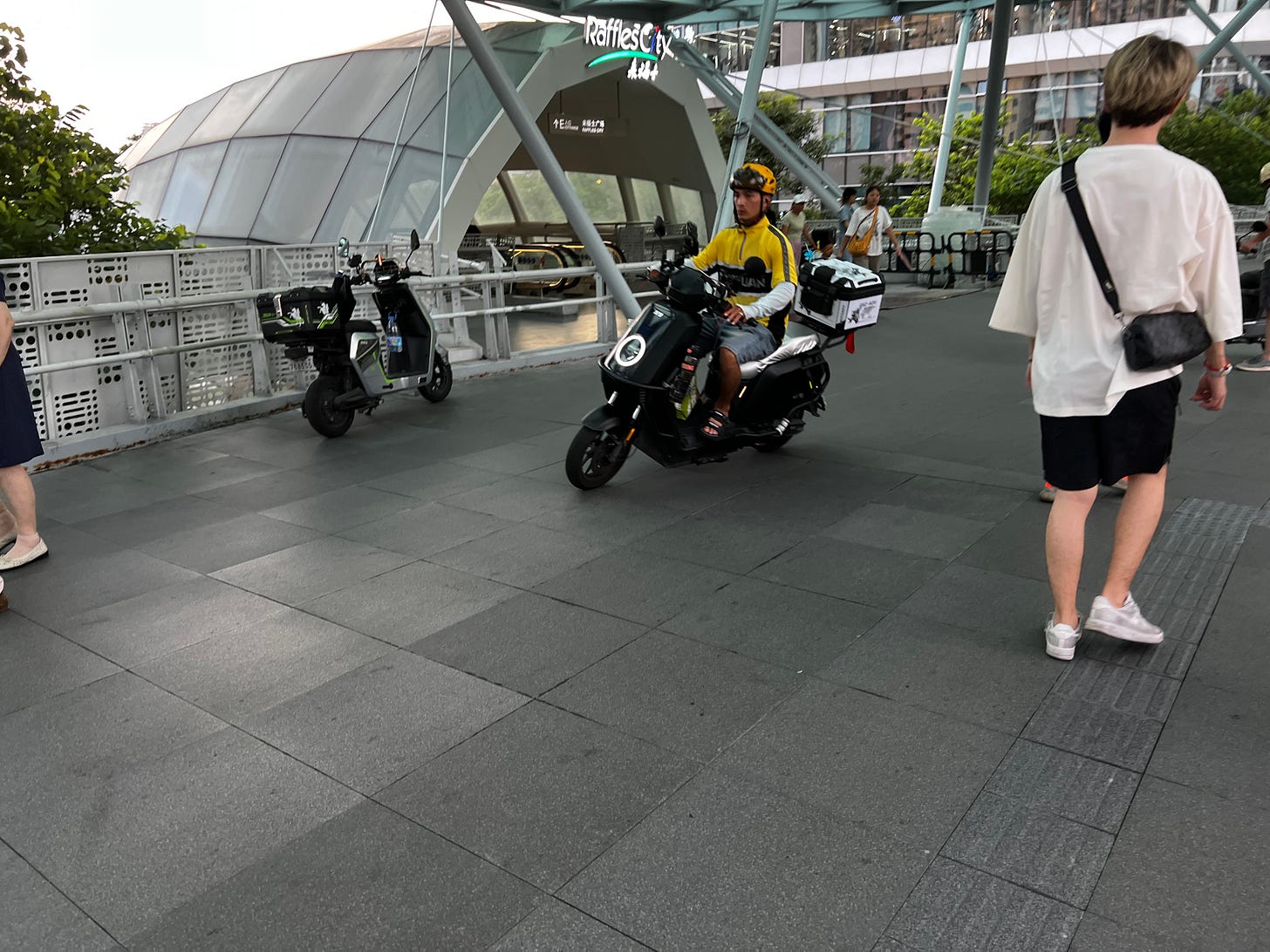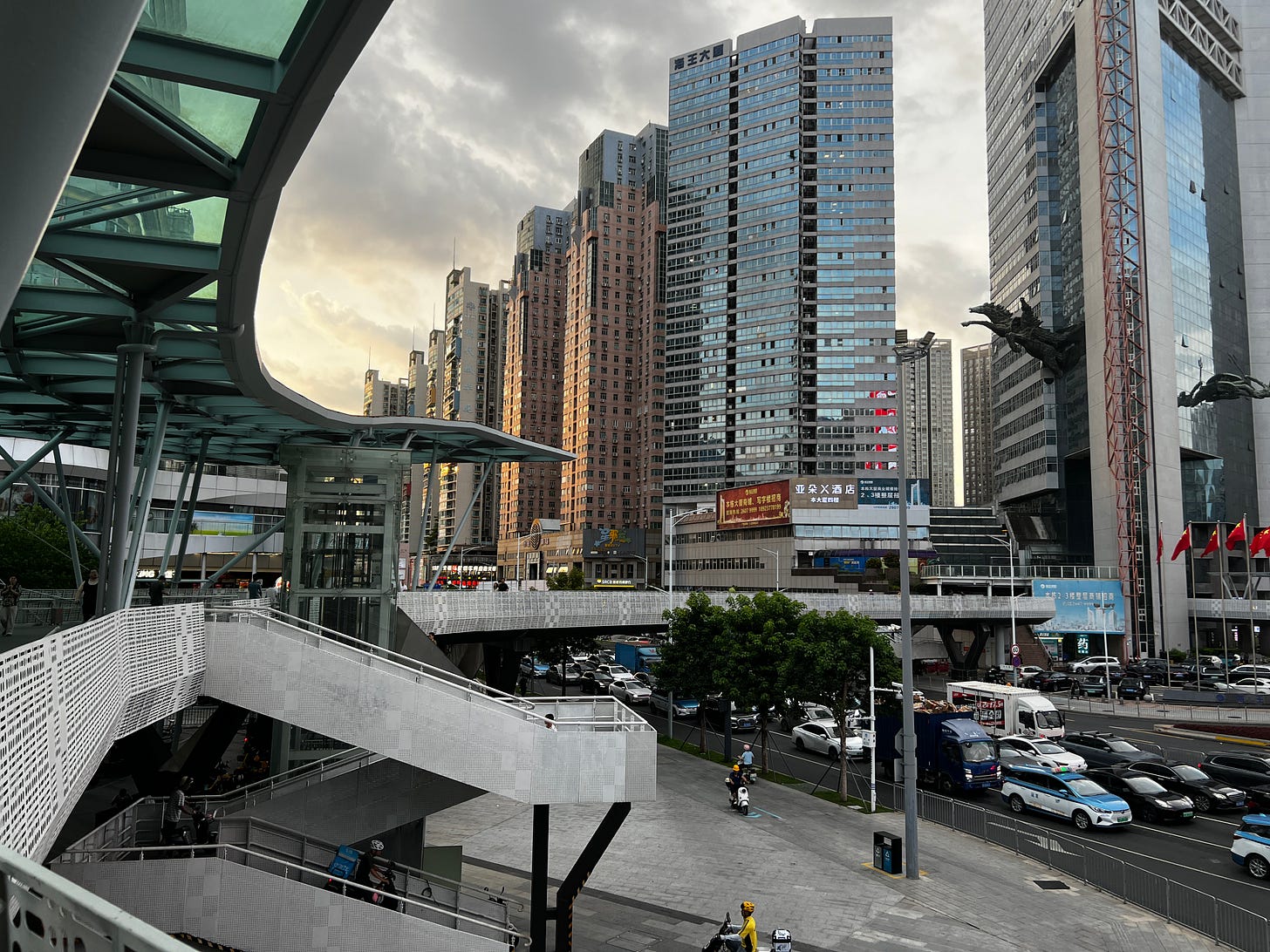An Auto-ethnography of Traffic in China
And the emerging second-story city
Travel in China has changed since I was last here in 2019.
China’s urban roads bristle with automated speed-control cameras, and their constant flashing and recording of license plates, and their deterrent effect is obvious. While speed control seems in check, lane discipline is looser: mid-block U-turn bays sit just upstream of pedestrian crossings, a concession to strict access management. Lower travel speeds appear to compensate for frequent, improvised manoeuvres.
Signal timings are fixed, publicly posted, and pulled directly into Amap, the dominant navigation app. That transparency lets drivers anticipate phase changes, smoothing flows.
Cars, however, still park on sidewalks, as in much of China. As a result, pedestrians walk in the street. This isn’t new — I’ve seen this before in Nanjing and Wuhan — but it remains strange to experience. The street network continues the multiway boulevard tradition: wide central lanes, side access roads, and elevated crossings. The effect is fast but disjointed — a city made for cars, now repurposed for electric ones.


As my son put it: The bike lane is the motorbike lane. The sidewalk is the motorbike lane. The street is the motorbike lane. The pedestrian overpass is the motorbike lane. (Seriously, there are bike ramps up to the pedestrian overpasses, either separate from, or in the middle of, the stairs, which people just ride up.)
China’s streets are rapidly electrifying. Green license plates, indicating the vehicle is electric, now form a very visible share of the private vehicle fleet. Electric taxis, delivery scooters, and personal mobility devices abound. The combustion engine isn’t gone, but it’s in retreat. The shift is infrastructural as much as cultural — an emerging system that already feels embedded.
Skyways are slowly emerging as a second-story city like in Minneapolis and a number of other cities. Given the inability to reign in the car, this seems like the next best alternative. In this case the second-story city emerges at least in part from the legacy of inconvenient pedestrian overpasses, they are slowly being connected into buildings, so in dense areas, pedestrians will be fully separated from cars and trucks and buses (though obviously not motorbikes, until this is better regulated.
FIN
Keep reading with a 7-day free trial
Subscribe to Transportist to keep reading this post and get 7 days of free access to the full post archives.






